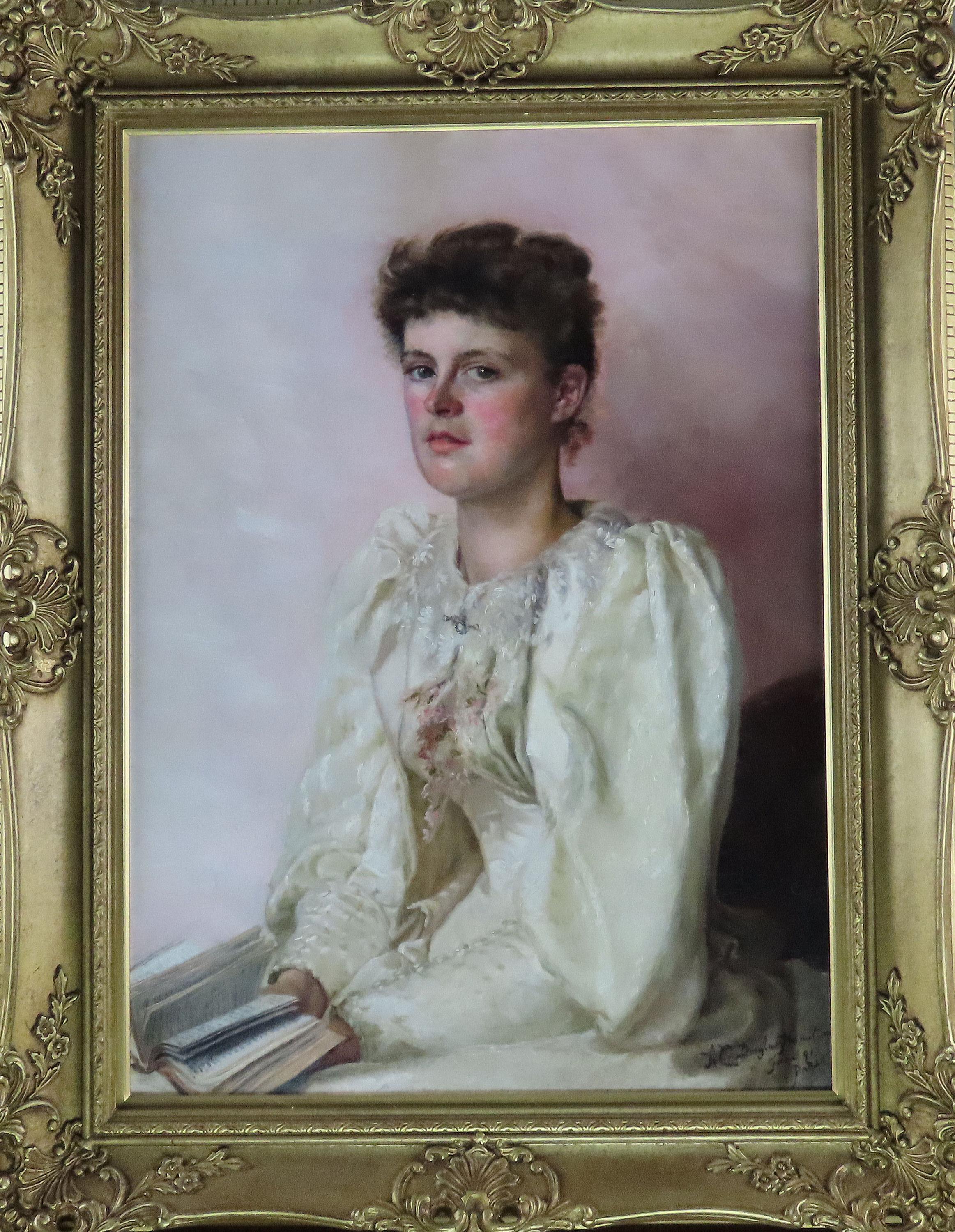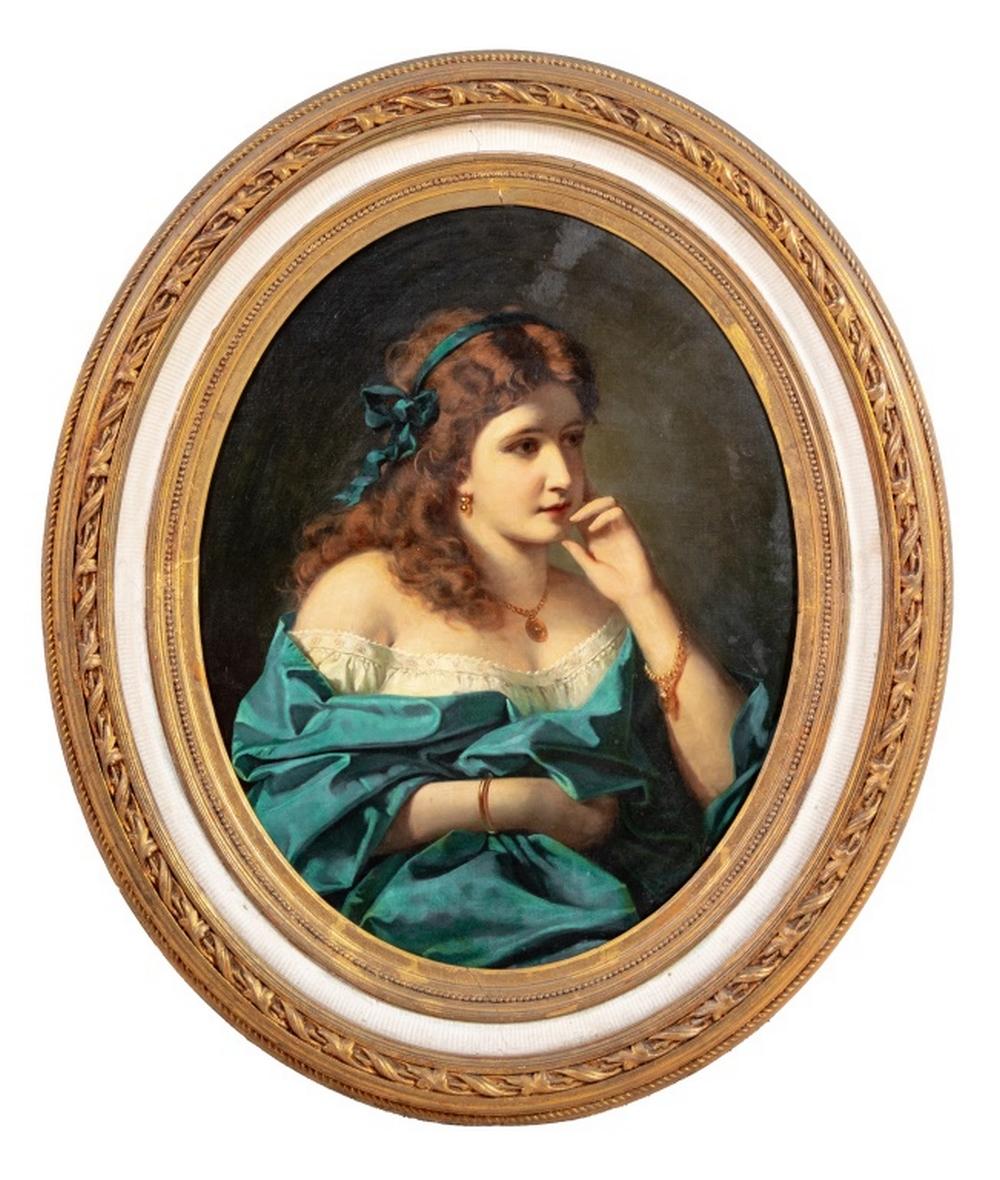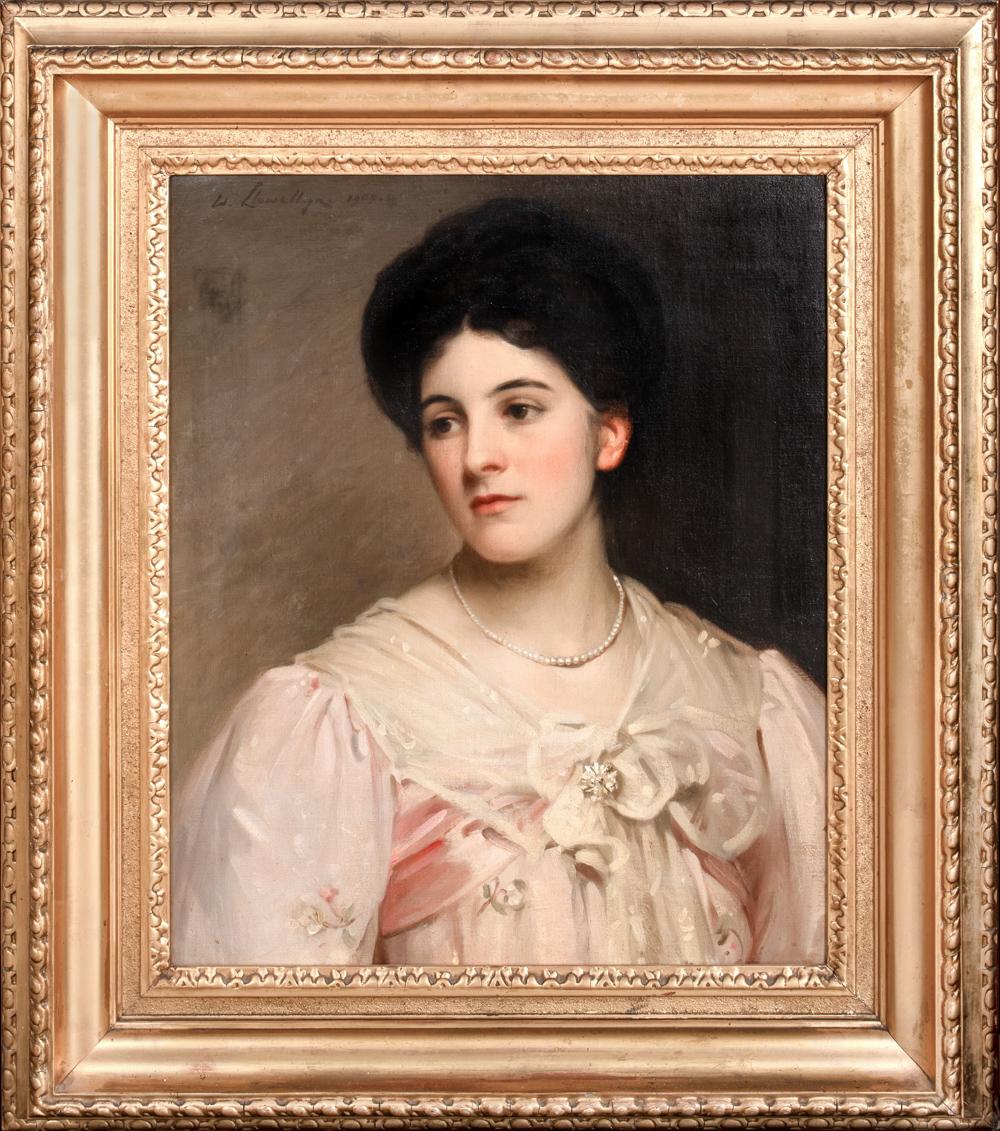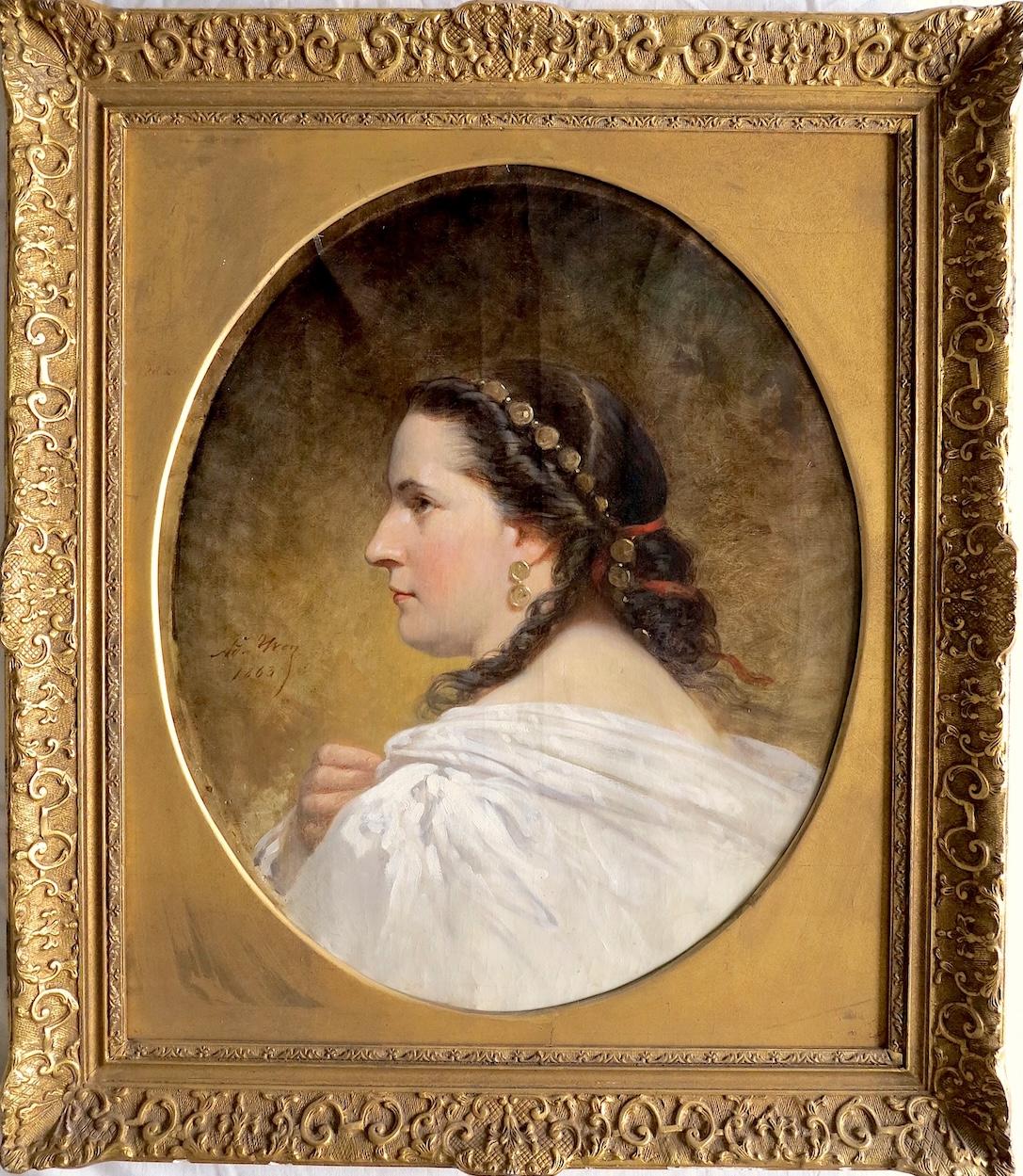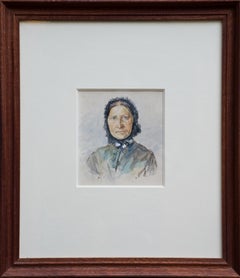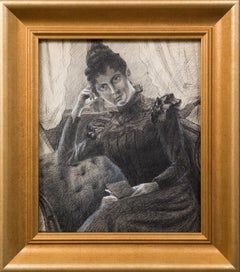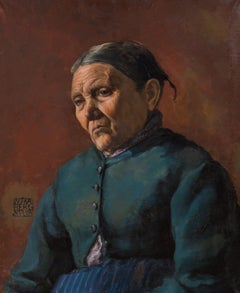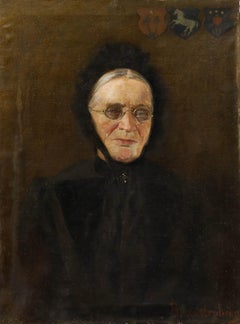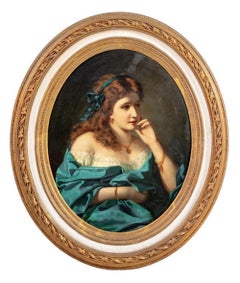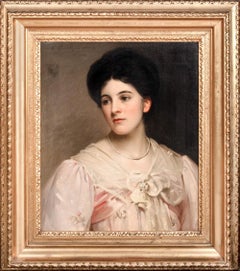Items Similar to Portrait of Alice Ritter by Ferdinand Fagerlin. Oil on Canvas
Want more images or videos?
Request additional images or videos from the seller
1 of 5
Ferdinand FagerlinPortrait of Alice Ritter by Ferdinand Fagerlin. Oil on Canvas1862
1862
$4,329.21
$5,411.5220% Off
£3,151.19
£3,938.9820% Off
€3,600
€4,50020% Off
CA$5,892.50
CA$7,365.6220% Off
A$6,591.13
A$8,238.9120% Off
CHF 3,430.06
CHF 4,287.5820% Off
MX$81,139.03
MX$101,423.7920% Off
NOK 43,637.49
NOK 54,546.8720% Off
SEK 40,940.57
SEK 51,175.7120% Off
DKK 27,396.78
DKK 34,245.9820% Off
Shipping
Retrieving quote...The 1stDibs Promise:
Authenticity Guarantee,
Money-Back Guarantee,
24-Hour Cancellation
About the Item
Ferdinand Fagerlin (1825-1907) Sweden
Portrait of Alice Ritter, The Artists Wife
oil on canvas
signed with monogram
painted 1862
canvas size 27.95 x 22.83 inches (71 x 58 cm)
frame 39.37 x 34.64 inches (100 x 88 cm)
frame included.
About the Seller
5.0
Platinum Seller
Premium sellers with a 4.7+ rating and 24-hour response times
Established in 2020
1stDibs seller since 2020
185 sales on 1stDibs
Typical response time: <1 hour
Associations
International Confederation of Art and Antique Dealers' Associations
- ShippingRetrieving quote...Shipping from: Östersund, Sweden
- Return Policy
Authenticity Guarantee
In the unlikely event there’s an issue with an item’s authenticity, contact us within 1 year for a full refund. DetailsMoney-Back Guarantee
If your item is not as described, is damaged in transit, or does not arrive, contact us within 7 days for a full refund. Details24-Hour Cancellation
You have a 24-hour grace period in which to reconsider your purchase, with no questions asked.Vetted Professional Sellers
Our world-class sellers must adhere to strict standards for service and quality, maintaining the integrity of our listings.Price-Match Guarantee
If you find that a seller listed the same item for a lower price elsewhere, we’ll match it.Trusted Global Delivery
Our best-in-class carrier network provides specialized shipping options worldwide, including custom delivery.More From This Seller
View AllPortrait of an Old Lady, 1886
Located in Stockholm, SE
This small and delicate watercolor is believed to depict Madame Papillon, a subject also portrayed by Hanna Pauli in an oil painting dated 1886. The portrait was created during the s...
Category
1880s Portrait Drawings and Watercolors
Materials
Watercolor
Portrait of Hulda in a Room at Ruds Säteri
Located in Stockholm, SE
Hilding Werner (1880-1944) Sweden
Hulda in a Room at Ruds Säteri
mixed media on paper
unframed 27 x 22.5 cm (10.63 x 8.86 inches)
framed 38 x 33.5 cm (14.96 x 13.19 inches)
Prov...
Category
Early 20th Century Mixed Media
Materials
Paper, Ink, Watercolor
$2,116 Sale Price
20% Off
Portrait of a Girl, 1887 by Danish Realist Painter Peder Mørk Mønsted
By Peder Mørk Mønsted
Located in Stockholm, SE
This painting titled "Portrait of a Girl" by the Danish realist painter Peder Mørk Mønsted captures an enigmatic young woman whose identity remains unknown. The girl, elegantly posed...
Category
1880s Realist Portrait Paintings
Materials
Oil, Wood Panel
Rediscovered Mastery: A Portrait by Nina Bergstedt
Located in Stockholm, SE
This poignant portrait by Swedish artist Nina Bergstedt captures a quiet intensity that lingers in the viewer’s mind. The sitter, an unknown woman, is portrayed with deep emotional p...
Category
1890s Realist Portrait Paintings
Materials
Canvas, Oil
A Young Woman With Her Dog by Victor Ravet
Located in Stockholm, SE
In this exquisite painting by Victor Ravet, we are transported to an elegant interior setting reminiscent of the grandeur of high-class homes. The focal point is a woman adorned in a shimmering pink gown, radiating grace and sophistication. Bathed in gentle light, her dress catches the glimmer, accentuating her beauty.
She holds a treat for a dog in her hand, enticing the furry companion who stands on its hind legs in eager anticipation. The canine's eyes fixated on the delicious morsel, capturing a moment of playful interaction between the woman and her loyal companion.
The scene takes on a narrative quality as the young woman's other hand delicately lifts a curtain, hinting at another room beyond. This subtle gesture adds depth to the composition, suggesting a world of hidden secrets and intriguing possibilities within the opulent surroundings.
Victor Ravet took inspiration from the Dutch Golden Age painters of the 17th century, such as Vermeer, Jacob Ochtervelt, and Gerrit Dou. This homage to their style and subject matter pays tribute to the timeless allure of domestic scenes, capturing a slice of life in a bygone era.
With meticulous attention to detail, Ravet masterfully recreates the textures and fabrics, immersing the viewer in the sumptuousness of the period. The soft play...
Category
1870s Realist Interior Paintings
Materials
Oil, Panel
Julius Kronberg’s Angelica – A Romantic Heroine of Renaissance Legend
Located in Stockholm, SE
Literary Origins of Angelica
The subject of this painting is Angelica, a princess from the epic chivalric romances of the Italian Renaissance. She first appears in Matteo Maria Boiardo’s Orlando Innamorato (1483) and reappears famously in Ludovico Ariosto’s Orlando Furioso (1532). In these poems – part of the Matter of France cycle of Charlemagne and his paladins – Angelica’s extraordinary beauty ensnares many knights, including Orlando (Roland) and his cousin Rinaldo, sparking rivalries and adventures. Ariosto’s narrative particularly highlights Angelica’s tumultuous journey: at one point she is stripped and chained to a rock as a sacrifice to a sea monster (a scene mirroring the myth of Andromeda) before being dramatically rescued by the valiant knight Ruggiero on his winged horse. Ultimately, however, Angelica chooses her own destiny. She falls in love with a humble Saracen soldier, Medoro, whom she nurses back to health, and she returns with him to her far-off Asian kingdom – an affair that drives the heartbroken Orlando to madness. This independent resolution (marrying outside the circle of Christian knights) made Angelica an emblem of feminine agency and romantic idealism in Renaissance literature. Her story remained popular in art and literature through the centuries, symbolizing the allure and elusiveness of love.
Kronberg’s Portrayal and Composition
In Julius Kronberg...
Category
Late 19th Century Realist Portrait Paintings
Materials
Oil, Wood Panel
You May Also Like
Original Oil on Canvas, A. C. DOUGLAS HAMILTON, "Portrait of a Lady"
Located in Mere, GB
A. C. DOUGLAS HAMILTON, 1918 - 2001
Studied at the Lancaster School of Art under Walter Bayes and won his National Diploma in 1949.
Original oil on canvas,
18.5 x 25.5 inches,
Fra...
Category
1890s Figurative Paintings
Materials
Oil
Brandenberg - German School Oil, Portrait of Anna Katherina Herrman
Located in Corsham, GB
This late 19th-century portrait depicts a figure in dark clothing against a muted brown background, creating a stark contrast that draws focus to the subject's expressive features. I...
Category
Late 19th Century Portrait Paintings
Materials
Oil
Anton Ebert Portrait of a Woman Oil on Canvas
Located in Astoria, NY
Anton Ebert (Austrian, 1845-1896), Portrait of a Woman, Oil on Oval Canvas laid on Board, 19th century, signed "A. Ebert / Wien" to mid right, original ova...
Category
Late 19th Century Realist Portrait Paintings
Materials
Canvas, Oil
Portrait Of Constance Luckock, dated 1907 by Sir Samuel Henry William Llewellyn
Located in Blackwater, GB
Portrait Of Constance Luckock, dated 1907
by Sir Samuel Henry William Llewellyn GCVO PRA RBA RI (1858-1941) sales to $160,000
Large 1907 portrait o...
Category
Early 20th Century Portrait Paintings
Materials
Canvas, Oil
Portrait of Madame Hermann-Joseph REINACH, born Julie BÜDING (1828-1870)
Located in Paris, IDF
Frédéric Adolphe YVON
(Eschviller, 1817 – Paris, 1893)
Portrait of Madame Hermann-Joseph REINACH,
born Julie BÜDING (1828-1870)
Oil on canvas
Signed and dated on the left
65 x 54 ...
Category
Late 19th Century French School Portrait Paintings
Materials
Oil
Oil Painting by William Richard Waters "Portrait of a Lady"
Located in Mere, GB
Oil Painting by William Richard Waters "Portrait of a Lady" flourished 1813 - 1880 Painter of Portraits, still-life as coastal genre scenes. Worked in Paris before settling in Dover....
Category
19th Century Portrait Paintings
Materials
Oil
$6,305 Sale Price
21% Off
More Ways To Browse
Dali Bronze John Saint
Dali Cavalier Triomphant
Dali Cervantes
Dali Corridor
Dali Drawers Of Memory
Dali Elijah
Dali Fallen Angel
Dali Ghost Of Ancestors
Dali La Pieta Nera
Dali Obsession Of The Heart
Dali Papillon
Dali Plum
Dali Sacred Cow
Dali Signed Ecstatic
Dali The Annunciation
Dali Thus Was Earth Created
Dali Tree Of Penitence
Dali Trilogy
